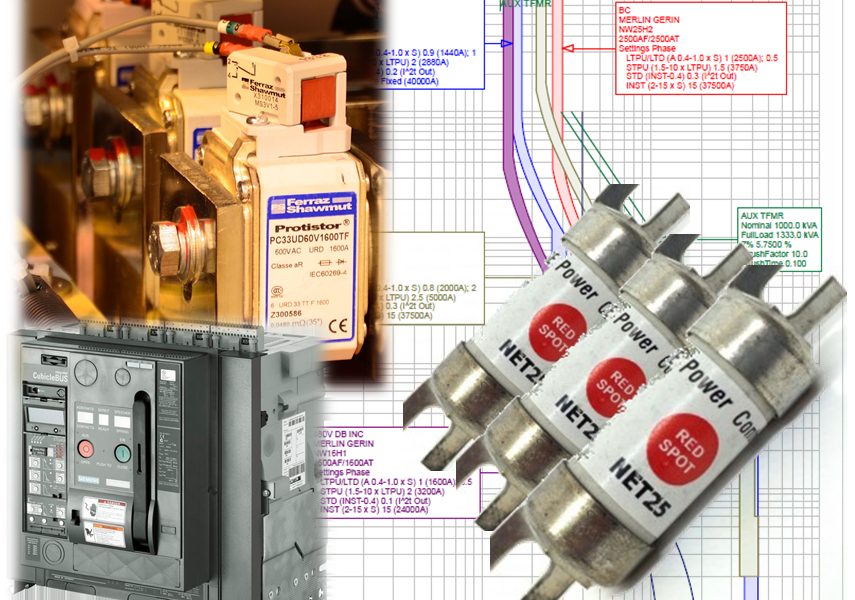
Protection Device Co-ordination
Protective Device Co-ordination is the process of determining the optimum timing of current interruption when abnormal electrical conditions occur within electrical control panels and systems. The goal is to minimize unscheduled or unexpected power outages, by ensuring that if and when a fault occurs, the installed fuses and circuit breakers will operate in a timely manner AND in the right order. This is especially important for Drilling and related applications, and Zeefax can provide a comprehensive Coordination Study service for all type and manufacturers of MCCs.
Until recently, protective device coordination studies would have been laboriously performed manually, using translucent log-log paper, but modern computer methods have enormously streamlined the process, reducing the time and the cost of a comprehensive study, thereby making system coordination studies a realistic proposition for almost any electrical installation.
Using advanced software routines, our expert analysts can produce optimised system response reports, including a selection of graphical and tabular displays , intended to enable the plant owner to fine tune each protection device to meet the specific operational and protection needs of the plant.
Reports include time vs. current coordination drawings, one-line diagrams and a complete schedule of device settings, highlighting individual response time settings for each breaker and for each fuse in the shutdown regime.
Furthermore, if components require updating, the report includes detailed recommendations and specifications for suitable devices, each carefully selected and dynamically re-modelled to ensure accurate and reliable protective co-ordination between electronic and thermal devices when installed.
This dynamic technique may be applied to almost any electrical power system including utility, industrial, commercial, manufacturing, and process systems, and device responses may be plotted at any voltage, current or application frequency.
Key Benefits
The benefits are:
- Design safer power systems by quickly and easily evaluating all devices for proper short circuit levels, and application within acceptable voltage ratings.
- Save time with automatic TCC drawing and associated one-line creation from the main one-line diagram.
- Eliminate errors by keeping all input data, one-line diagrams, TCC’s and study results in a single project database.
- Communicate designs effectively with high quality graphical output and custom formats.
Standards
Using the advanced software analysis routines, we can perform detailed studies according to the recognized international standards for Vessels and Offshore units (IEC61363) and for land based installations (IEC60909).
These standards define the procedures for calculating short-circuit currents and protection systems for three-phase electrical installations for ships and mobile and fixed offshore units.